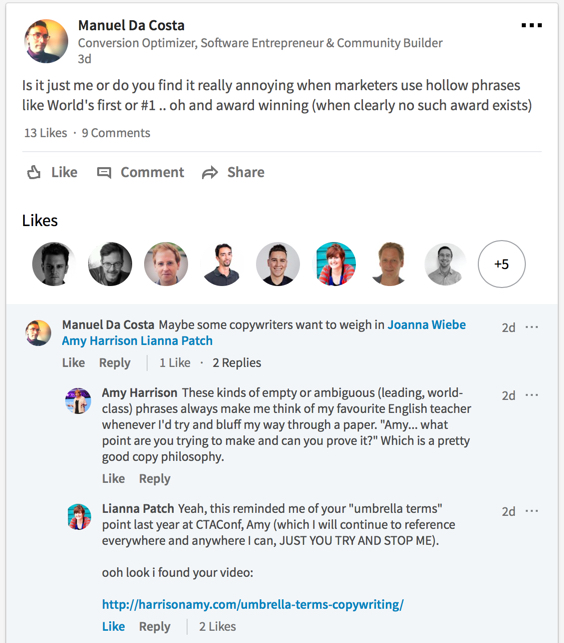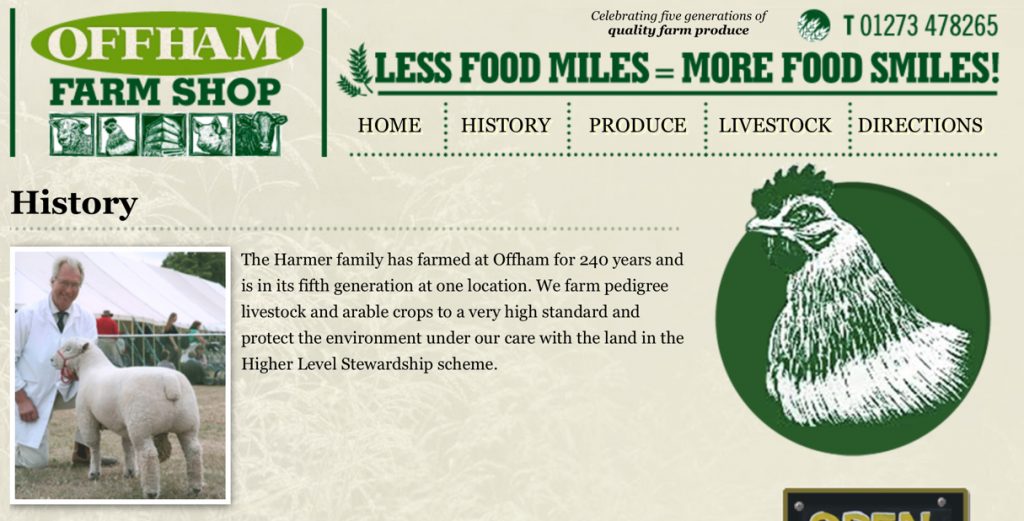A critical habit was drummed into me long before I knew I’d use it in pretty much ever aspect of my copywriting career.
At school, English was by far my favourite subject, and even though I’d hope each assignment would pass with flying colours, it was the ones that needed work where I learnt the most (isn’t that the case with everything?)
Grammar, spelling, structure were usually easy changes to make. The comments that challenged me to hone my writing, nay my communication skills (I never thought I’d use nay in an actual sentence) were these:
What point are you trying to make?
And:
Can you prove this?
It was a polite way of saying:
Amy, stop being lazy.
My English teacher had a keen eye for when I was trying to fudge a point and sound like I knew what I was talking about. He had no time for it.
And neither do your prospects.
There is a distinct difference between my English teacher and your target market. He had to read every paper I turned in. Fudged or proven, vague or razor sharp, some part of his evening was trawling through the work of hundreds of students including mine. He could have just marked me down, but instead pushed me to transform the sometimes fuzzy thoughts in my head into clear and compelling arguments.
Now, your prospect is not waiting online, red pen in hand to ‘see what you come up with this time.’ They’re not waiting at all. They’re busy, interested in other things, and when it comes to taking action on your marketing, their default is usually inertia.
If your copy isn’t vivid, specific and emotive, it’s vague. And if it’s vague, it’s ambiguous
The problem with ambiguity in copywriting
You have seconds to communicate with a prospect, so being clear and laser-focused on your points counts.
But Amy – I am clear and laser-focused!
Wait a minute. You may think you are, but please check first.
Take your headline, or benefits or body copy and give it to someone who fits your target market, but knows nothing about your business. Ask them these 2 questions:
- Can you describe my business, what it does and the results it gets for customers?
- Would you like to know more?
If the answers sound like:
I think you’re a leading, professional service company that believes in excellence and you can help me unlock my potential and take me to the next level? Do I want to know more…. umm, maybe? You’re standing right in front of me so this is a bit awkward if I say no. Can I say yes for now and check my diary when I get… *Disappears in a puff of smoke.*
Then theres probably ambiguity in your copy. The problem with vague, ambiguous phrases such as ‘leading’ first-rate’, ‘professional’ is that they’re open to interpretation.
For example, imagine my embarrassment when I told my friend:
I love Clowns!
And my friend replied:
Me too!
But when I turned up at his at 5am, with tickets to the clown convention, dressed like this:
There was an awkward moment or two.
If your prospects misinterpret the point of your marketing they may:
- Under-estimate your meaning and fail to see the value of what you offer
- Over-estimate your meaning, buy and be disappointed
- Struggle to know what you do and not feel confident enough to buy
Ambiguity makes you invisible
The other problem with ambiguous marketing is that it’s easy to ignore (unlike my clown outfit).
Marketing that says the same as everyone else isn’t working hard to demand attention. Your customer’s brain thinks “seen that, show me something new.”
You didn’t go into business, or decide to market a business to sound like everyone else. you want to stand out, to be a beacon of hope to your prospect’s problems.
The challenge, is that the opposite of ambiguity takes some extra work. Just as I used to wish my English teacher would just give me a good mark on a first draft, sometimes I wish I could use the first draft copy that I write. The draft where I know what I want to say, but haven’t clearly articulated it.
But there’s no way around it. If my points are not clear, there’s more work to be done. And it’s worth the effort because…
Ambiguity doesn’t go unnoticed
“Ah Amy – caught you out! You just said ambiguity makes me invisible, now you’re saying it doesn’t go unnoticed! Have that!”
Have it I shall.
Ambiguity makes you invisible to many prospects, but there will be those with a keen eye who are watching you. As this recent discussion sparked by Manuel Da Costa, conversion expert at Effective Experiments:
Solving this problem is simple, but (as with most diets and exercise routines and all other stuff that is good for you *sigh*) not easy.
Simply answer the same questions my English teacher asked me.
- What is the point you want to make?
- Can you prove it?
1. What is the point you want to make?
This may seem an obvious question.
I want to show customers that we can be trusted, and that we are professional.
Excellent points to make my good (imaginary) friend!
This is a perfect starting point, but you need to unpack these a little more, if you also want to answer question number…
2. Can you prove it?
The second part of this stops you from simply saying “we are trustworthy and professional”. It challenges you to outline more specific details rather than use those ambiguous terms outright.
Think about the customers who love what you do. Why would they say you can be trusted? For example:
- There was a fault with our first delivery and they replaced it the same day
- Every time I call, I’m talking to a real person in just a few seconds
- I love that it’s a small family company, I really feel like I know them
Then build these elements into your copy. (Obviously where trust is concerned, testimonials, awards, customer ratings also work very well.)
For example… [Editor’s note – I was going to make up some copy, but I found a lovely snippet from a farm shop local to me, and it included a photo of a man with a sheep. What’s not to trust about that?]
Do we trust them?
- 240 years farming history
- Fifth generation at one location
- Pedigree livestock
- Protect the environment through Higher Level Stewardship scheme
- Smiling man in white coat next to a sheep
Now, you could say that ‘very high standard’ is vague and yes, I’d love to see a snippet of copy to back that up, but the site does go into further detail about how they farm their livestock and crops. In a relatively short piece of copy, you have a lot of rich detail that makes you feel like you know how they work.
Let your prospect visualise WHAT it is you do
Ambiguous copy builds a barrier between your message and your prospect’s interpretation of that message. To them it can feel like looking through frosted glass, when what you want is for them to understand within seconds just how your service or product will impact and transform their lives.
Keep those two simple questions in mind when writing your own marketing copy, and feel free to unpack any ambiguity below. Want tips on how to make something more specific and less vague? Let me know in the comments and I’ll dive in to help you out!





It stuns me with all the competition out there how some people just try to copy (sorry **ahem** ‘benchmark’) their marketing copy and then expect it to work just the same for them.
We all need to stand out in our own unique way – great post!
Thanks Amy. I had just finished a newsletter article for a client.. so I rushed back and ‘tried harder’. I needed to!
Great to hear Denise! (Sorry for the delay in replying your comment had slipped through the cracks on the back end!) 🙂